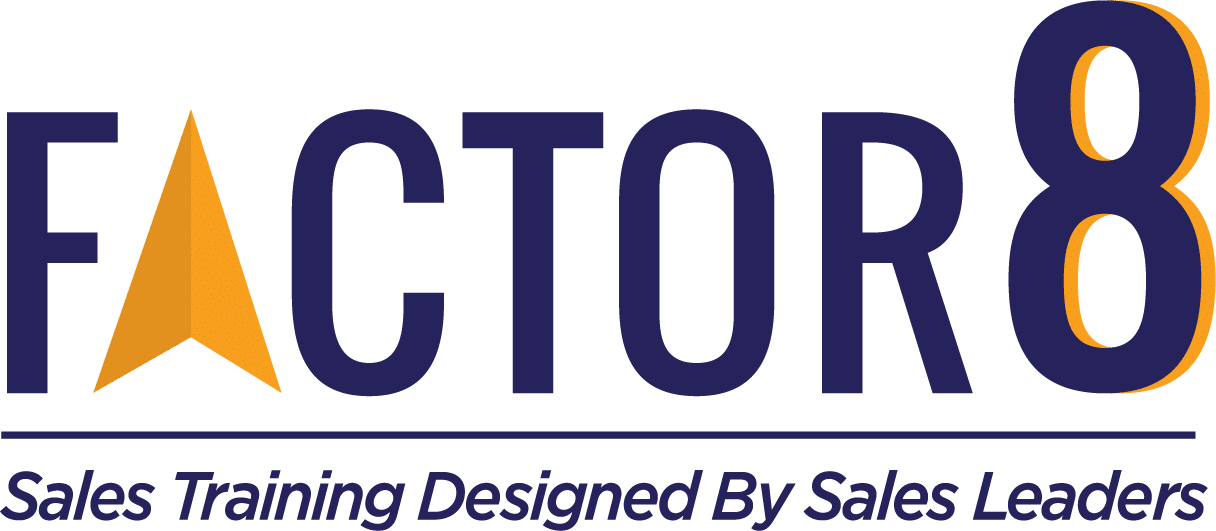How to Budget for Sales Training
Sales Training Budget: Getting Started
Employee development is more critical than ever as our incoming sales reps have less experience and fewer skills, yet our customer expectations and the technology we’re required to master are on the rise.
The best practice is to budget for sales training each year alongside your normal recruiting and tech line items. Now more than ever, “Training is something you do, not something you did.”
Don’t be one of the sales leaders who wait for a budget surplus, a BHAG goal, or a massive GTM shift to train. Today’s generations prioritize career development ABOVE their paychecks.
READ: Why You Need a Sales Training and Enablement Budget
So hats off, leader! You’re ahead of the game by searching for annual sales training budget amounts in this blog.
Why Budget for Sales Training?
Because many of us slashed or froze headcount and training budgets in 2023, we recommend that planning for 2024 should be based on 2022 budgets. Before the economic uncertainty, we saw organizations spending more on employee development. This was driven by increasing customer expectations, shrinking pools of available talent, and a resounding demand by the employee base.
In 2022, the average company budgeted approximately $1200/per employee for professional development annually – up about 14% over the previous year. Keep in mind, that this average number is for all employees – from forklift driver to CEO. Not a surprise, but services and manufacturing industries reported the largest budget increases, whereas government, education, and nonprofits largely stayed the same or decreased.
Growing customer demands = growing training demands.
We expect to see these numbers come down in the 2023 Training Industry Report with the widespread layoffs, but we anticipate a resounding rebound in 2024 for two reasons:
- Sales leaders saw the evidence of their untrained workforces in 2023. Our time to ramp to quota is still longer than pre-pandemic (or non-remote) days, and the majority of sellers missed quota – even after trimming the fat. The statistics vary by resource, but in 2023 approximately 50% of sellers hit quota vs. the normal average of approximately 70%.
- The pendulum is shifting back to quality conversations over a cadenced quantity of messages. Many believe we’ve come as far as we can with the written cadence, and all evidence now points to the need to refresh and improve the human interaction between prospect and seller. This is underlined by the overwhelming feedback that sellers today lack phone confidence and business conversation skills – two attributes we can’t solve with technology alone.
How Much Does Sales Training Cost?
Average spend on annual training per FTE is 1-3% of the total annual budget or 2-5% of the salary budget. That’s about $50.00 per $1000 of salary. If your team is new, only remote, shifting, or hasn’t had hands-on sales development for six months, aim slightly above average:
Six percent of salary = $60.00 per $1000 of salary
$100K employee = $6000/year | $60K employee = $3600/year
Remember, the benchmark is an average across all industries and employee types – landscapers, fast food workers, and CPAs. If customer experience and loyalty are critical to you, go higher. And, if your industry is complex or your product is early in the lifecycle, go higher. If you’re competing like mad for talent, go higher.
One source says sales jobs average 20% higher than the industry average, meaning 6-7% of their salary.
At Factor 8, our per-employee costs (for under 1000 employee companies) to outsource one year of sales development (onboarding to upskilling) comes in at the middle of this budget range – depending on services and other factors – again validating the research.
How Often Should You Train Your Sales Team?
In 2022, the average organization provided about 5 hours of training per month or a total of 64 hours a year. If you haven’t trained since new hire onboarding, you’re lagging well behind average. This number is up since 2021 when we averaged 4 hours a month.
We theorize that this increase is driven by two sources: Remote workers and ineffective remote training.
With most of our teams still working remotely or hybrid, we are hit from two sides when it comes to learning:
- We’re missing the “OTJ” passive shadowing opportunities of overhearing our peers.
- The ineffectiveness of remote training as compared to in-person. “Zoom fatigue” is real and an unengaged learner does not make big behavior changes (kind of like an unengaged buyer).
Factor 8, provides sales training for virtual sellers and sales managers and we do so both in-person and virtually. I can tell you firsthand that it is taking us more remote sessions to get our normal increases in connection and conversion rate results we normally see in just a few hours when onsite.
By the way, like the last ten years, most companies are increasing budgets for manager training the most (although this group still typically falls underneath “onboarding” as the training department’s top priority).
If your enablement department isn’t prioritizing the development of your sales management team, consider allocating your budget to outsourcing this critical training.
How Many Sales Trainers Do You Need?
Most companies under 1000 learners employ 1 trainer for every 80-100 learners. The exception to this rule is for start-ups where we recommend budgeting for the headcount at around 50 learners if you’re on the way up.
When beginning an enablement effort, your team literally has everything to build. Digital selling skills can be outsourced, as can some systems training, but the product, services, process, and customer acumen training has to come from within. Remember, for every hour in the classroom, there’s someone spending between 3-10 hours creating that learning interaction (and please don’t get me started on the difference between training and telling! 😉)
If you’re in build mode, I recommend a management to director-level staffer and 1 year of time before your onboarding program begins to produce reps hitting quota in industry average timelines (around 6 months, depending on role).
Why Invest in Sales Training?
Employee development and career advancement are 2 of the top 3 things millennials search for when accepting jobs. And only 50% of reps think their company provides them with the training they actually need to be successful.
More great news, the American Society for Training and Development cites companies who invest in training their people achieve a 24% higher profit margin compared to those who don’t invest.
It’s much more expensive to recruit and replace (on average 200% – 600% of salary vs. 6% – 7%).

Justification and Benefits of Sales Training
Here’s some great research to help you justify the spend:
Both HR Magazine and ATD sites double the profit per employee that prioritizes training (priority = double the spend of not a priority). In fact, companies who invest a minimum of just $1500/employee will see 24% higher profits.
CSO Insights proved a 63% average improvement across teams where the manager was getting development (that’s average you guys…what would happen with an 85% increase on entire TEAMS?)
And great onboarding can cut a new hire’s time to quota in HALF. That could be 1-2 extra months of productivity on an already-shrinking rep lifespan. Worth it!
Again, I can validate these findings. Over twelve years of partnering with BDR, AE, AM, and management teams across thousands of companies, we’ve seen lifts from 30-300%, with a huge percent of teams paying for the training before it’s even over with increased leads, pipeline, close rate, etc.
If you need an ROI model to get the spend, I recommend showing a 15% lift over about 90 days post-training if you’re still doing event-based training.
READ: How to Measure Sales Training ROI
You can expect bigger spikes with face-to-face training, but longer-sustained skills with a long-term blended approach. Overall, if you can’t show at least a 5-10% lift, it probably isn’t worth the investment.
Not sure it will work? Do it anyway and measure the results. Remember this?

A recent Ambition study surveyed sales reps about training and 98% of them said they would stay with a company indefinitely if they got ongoing development.
IBM recently shared that employees who feel they cannot develop in the company and fulfill career goals are 12X more likely to leave.
Truth is, sales reps know less than they did 10 years ago and our customers expect more. If you haven’t added a development line item by now, you’re in trouble. If you haven’t increased it in the past five years, it’s time.
And, if it’s been more than a year since you provided training, increase your number.
Need help building your sales training & development plan?
Click here to watch our session on “How To Build Your Training & Development Plan” to learn what industry spend is for sales training, the critical skills you need for every sales role, how to partner with your sales training organization, and more!
Is sales training included in your budget?
Contact us today to learn about our customizable virtual sales training programs
available for reps (and managers).

